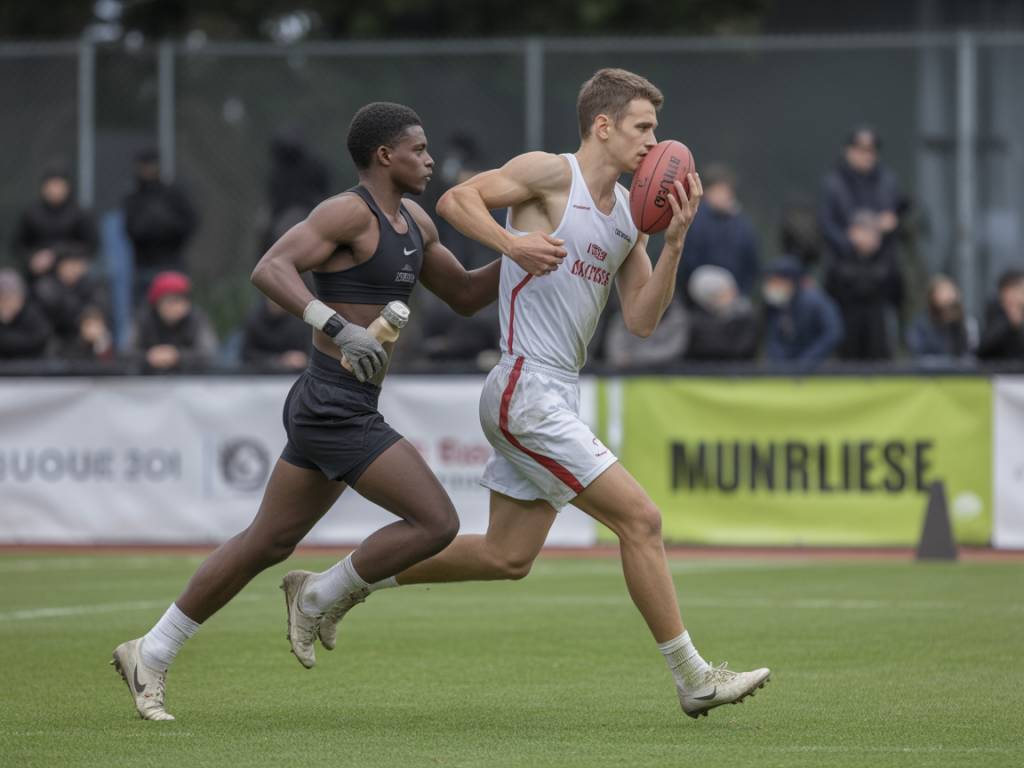The Digital Transformation of Local Sports Journalism
In recent years, the landscape of journalism has undergone a rapid and profound transformation. Nowhere is this more evident than in the realm of local sports journalism. Once confined to the back pages of community newspapers and sporadic radio broadcasts, local sports coverage is experiencing a digital renaissance. With advances in digital technology, increased access to high-speed internet, and the proliferation of social media platforms, local sports journalism is evolving to meet the changing expectations of audiences in the 21st century.
Today, readers expect instant updates, multimedia-rich content, and personalized coverage. Local sports outlets are finding innovative ways to deliver this, marking a dramatic shift from traditional newsrooms to dynamic, digital-first operations. This shift is not just about survival—it’s about thriving in an increasingly competitive media environment.
From Print to Pixels: The Shift to Online Platforms
The decline of print journalism has had a pronounced impact on local newspapers, many of which historically played a vital role in covering community-level sports. However, this decline has given rise to digital platforms dedicated exclusively to local athletic coverage. Websites, blogs, and mobile apps now serve as central hubs for hyperlocal sports news, game recaps, athlete profiles, and real-time scoring updates.
This shift is being powered by content management systems like WordPress, which enable smaller outlets or even independent journalists to publish and distribute articles rapidly. These tools have democratized the content creation process, allowing anyone with insight and dedication to contribute meaningfully to the local sports dialogue in their area.
The Impact of Social Media on Local Sports Reporting
Social media platforms such as Twitter, Instagram, and Facebook have revolutionized how local sports news is disseminated and consumed. Twitter, in particular, serves as a real-time newswire, where journalists can provide play-by-play commentary, injury updates, and post-game reactions almost instantaneously. Facebook community groups and Instagram stories give fans behind-the-scenes access to their favorite teams and athletes.
For local sports reporters, this means building a personal brand and engaging with readers in real-time. It also offers an avenue for smaller teams and niche sports to gain exposure that would be difficult through traditional outlets. Moreover, the emergence of live streaming on platforms like YouTube and Facebook Live has allowed high school games and community sports events to reach much wider audiences at minimal cost.
Local Sports Journalism and Fan Engagement
One of the most significant developments in the digital era is the increased engagement between journalists and their audience. Readers are no longer passive consumers—they are active participants in the news cycle. They comment on articles, share content on social media, and suggest story ideas. This interaction allows local journalists to better understand the interests of their readership and tailor their reporting accordingly.
Fan engagement has become essential for growing readership and fostering community support. Many outlets are utilizing email newsletters, podcasts, and interactive graphics to enhance user experience and deepen audience relations. By addressing the specific needs and preferences of local fans, journalists can create more relevant and impactful content.
The Rise of Independent Sports Journalists and Bloggers
Digital tools have also lowered the barrier to entry for independent sports journalists and bloggers. Without the need for a large editorial staff or significant investment, passionate individuals can now carve out their space in the local sports ecosystem. These independent voices often bring a fresh perspective, analytical depth, and a community-first approach that resonates strongly with niche audiences.
Many of these journalists operate on platforms like Substack or Patreon, which allow them to monetize their work through reader subscriptions. This model promotes high-quality content while ensuring financial sustainability—a crucial factor as traditional funding sources decline.
Challenges Facing Local Sports Journalism in the Digital Age
Despite the many benefits of the digital transition, local sports journalism still faces several challenges. Chief among them is the issue of revenue generation. While digital advertising and subscriptions offer some financial support, they often fall short of replacing the income previously derived from print circulation and traditional ad sales.
Another challenge is maintaining journalistic integrity and quality in an era of fast-paced content production. The pressure to publish quickly can sometimes lead to errors, sensationalism, or a lack of thorough analysis. Additionally, competition from citizen journalism and user-generated content can drown out professional reporting, making it harder for readers to distinguish credible sources from unreliable ones.
The Role of Multimedia and Data in Storytelling
Digital journalism is increasingly relying on multimedia content to enhance storytelling. High-quality photography, video highlights, podcasts, and infographics now accompany many written articles, providing readers with a more immersive experience. Data-driven journalism is also growing, with sports writers using analytics to delve deeper into performance trends, player statistics, and team comparisons.
These tools not only enrich the content but also cater to different learning styles and capture the attention of a broader audience. For local sports outlets, investing in multimedia content is becoming essential to remain competitive and relevant.
Opportunities for the Future
The future of local sports journalism in the digital age is filled with opportunity. As new technologies such as artificial intelligence, machine learning, and augmented reality become more accessible, journalists can further personalize content and enhance reader interaction.
Additionally, there is a growing recognition of the importance of covering underrepresented sports and athletes, such as women’s leagues, adaptive sports, and youth programs. Digital platforms have the scalability to support these efforts, helping to build a more inclusive and diverse sports media landscape.
Educational institutions and local communities are also getting more involved, offering support through journalism programs, local sponsorships, and collaborative reporting projects. These initiatives serve to build the next generation of sports writers while strengthening the ties between media outlets and the communities they serve.
Key Takeaways for Local Sports Journalism
In summary, the digital age has reshaped local sports journalism in numerous significant ways. The transformation is ongoing, but several key trends are already apparent:
- Digital platforms have replaced traditional newspapers as primary sources of local sports news.
- Social media allows for real-time reporting and enhanced fan interaction.
- Multimedia content and data analytics are elevating the quality of storytelling.
- Independent voices are contributing to a more diverse and vibrant media landscape.
- Sustainability and integrity remain critical challenges that require innovative solutions.
As technology continues to evolve, so too will the tools and techniques used by local sports journalists. What remains unchanged, however, is the value of telling stories that matter to local communities—a mission that, now more than ever, is strengthened by digital innovation.






More Stories
Comment les chaînes YouTube spécialisées redéfinissent la consommation des médias sportifs chez les jeunes fans
L’évolution des algorithmes de recommandation et leur impact sur la consommation des médias sportifs
L’influence croissante des créateurs de contenu indépendants dans les médias sportifs